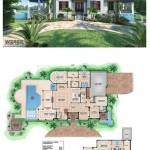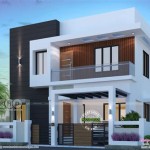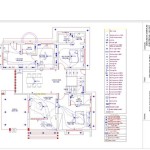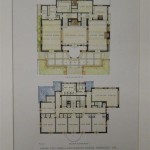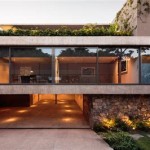Coastal Living House Plans For Narrow Lots: Maximizing Space and Style
Coastal living often evokes images of sprawling beachfront properties, but the reality is that many coastal communities face the challenge of limited land availability. Narrow lots, in particular, present unique design considerations for homeowners seeking to embrace the coastal lifestyle without sacrificing comfort and functionality. Coastal living house plans specifically designed for narrow lots offer innovative solutions to maximize space, capture natural light, and create a seamless connection to the surrounding coastal environment.
The allure of coastal living is undeniable. The refreshing sea breeze, the calming sounds of the ocean, and the abundance of natural beauty create a tranquil and inviting atmosphere. However, translating this idyllic vision into a practical and aesthetically pleasing home on a narrow lot requires careful planning and architectural expertise. These house plans often incorporate vertical design elements, open-concept layouts, and strategic window placement to overcome spatial limitations and create a sense of spaciousness.
Several factors contribute to the popularity of coastal living house plans for narrow lots. Firstly, the increasing demand for coastal properties has driven up land prices, making narrow lots a more affordable option for many prospective homeowners. Secondly, the desire for low-maintenance living is prevalent among coastal residents, and smaller homes tend to be easier to manage and maintain. Lastly, architectural innovation has led to the development of sophisticated design solutions that effectively address the challenges of narrow lot construction, resulting in homes that are both stylish and functional.
Understanding the Challenges of Narrow Lot Construction
Building on a narrow lot presents a unique set of design and construction challenges. One of the primary concerns is maximizing usable living space within the limited footprint. This often necessitates creative design strategies, such as utilizing vertical space, incorporating built-in storage solutions, and minimizing hallways. Another challenge is ensuring adequate natural light and ventilation throughout the home. With limited exposure to sunlight, careful attention must be paid to window placement and the use of light-reflecting materials.
Setback requirements, which dictate the minimum distance a building must be from property lines, can further restrict the buildable area on a narrow lot. This requires architects to carefully consider the placement of the house on the lot to comply with local zoning regulations while maximizing the available space. Furthermore, access to the construction site can be limited on a narrow lot, potentially increasing construction costs and timelines. This necessitates meticulous planning and coordination among builders, suppliers, and other stakeholders.
Privacy concerns are also heightened on narrow lots, as homes are often situated close to neighboring properties. Thoughtful landscaping, strategic window placement, and the use of privacy screens can help to mitigate these concerns and create a sense of seclusion. Finally, structural considerations are paramount when building on a narrow lot. The foundation and framing must be designed to withstand lateral loads and ensure the stability of the building, particularly in areas prone to high winds or seismic activity.
Key Design Features of Coastal Living House Plans for Narrow Lots
Coastal living house plans for narrow lots often incorporate a range of design features that are specifically tailored to address the challenges of limited space and create a comfortable and inviting living environment. Open-concept layouts are a common feature, blending living, dining, and kitchen areas to create a sense of spaciousness and facilitate social interaction. This design approach eliminates unnecessary walls and maximizes the flow of natural light throughout the home.
Vertical design elements, such as multiple stories and vaulted ceilings, are used to expand the living space without increasing the footprint of the house. Staircases are often designed to be both functional and aesthetically pleasing, serving as architectural focal points within the home. Balconies and decks, strategically positioned to capture ocean views and sea breezes, extend the living space outdoors and provide opportunities for relaxation and entertainment.
Large windows and sliding glass doors are incorporated to maximize natural light and create a seamless connection between the interior and exterior. These features not only enhance the aesthetic appeal of the home but also reduce the need for artificial lighting, contributing to energy efficiency. Durable and weather-resistant materials, such as fiber cement siding, impact-resistant windows, and metal roofing, are commonly used to withstand the harsh coastal environment and minimize maintenance requirements.
The integration of outdoor living spaces is a key element of coastal living house plans. Porches, patios, and decks provide opportunities for outdoor dining, lounging, and enjoying the surrounding coastal scenery. Outdoor showers are also a popular feature, allowing residents to rinse off after a day at the beach. Landscaping plays a crucial role in enhancing the curb appeal of the home and creating a sense of privacy. Native plants, which are well-suited to the coastal environment, are often used to minimize water consumption and maintenance requirements.
Interior design elements often reflect the coastal aesthetic, incorporating light and airy colors, natural materials, and nautical-inspired accents. Hardwood floors, whitewashed walls, and seashell-themed decor create a relaxed and inviting atmosphere. Built-in storage solutions, such as bookshelves, cabinets, and window seats, help to maximize usable space and minimize clutter. Smart home technology, such as automated lighting, temperature control, and security systems, can enhance convenience and energy efficiency.
Maximizing Space and Functionality
Effective space planning is crucial for maximizing the functionality of coastal living house plans for narrow lots. This involves carefully considering the layout of each room and optimizing the use of every square foot. Multi-functional spaces, such as living rooms that can double as guest bedrooms, are often incorporated to accommodate a variety of needs. Flexible furniture, such as sofa beds and expandable dining tables, can be easily adapted to suit different situations.
Storage solutions are essential for keeping a small home organized and clutter-free. Built-in shelving, cabinets, and drawers can provide ample storage space without sacrificing valuable floor area. Vertical storage solutions, such as wall-mounted shelves and hanging organizers, are particularly effective for maximizing space in kitchens, bathrooms, and closets. Utilizing the space under stairs for storage is another clever way to increase storage capacity.
The strategic use of mirrors can create the illusion of more space and enhance the natural light within a room. Mirrors placed opposite windows or along walls can reflect light and make a room feel larger and brighter. Minimalist design principles, which emphasize simplicity, functionality, and clean lines, can also contribute to a more spacious and uncluttered living environment. Eliminating unnecessary furniture and decorative items can create a sense of openness and reduce visual clutter.
The careful selection of appliances and fixtures can also contribute to space efficiency. Compact appliances, such as stackable washers and dryers and built-in microwaves, can save valuable floor space. Wall-mounted faucets and toilets can create a more streamlined and modern look in bathrooms. Energy-efficient appliances and fixtures can also help to reduce utility bills and minimize the environmental impact of the home.
Ultimately, the success of coastal living house plans for narrow lots depends on a combination of innovative design, careful planning, and attention to detail. By addressing the challenges of limited space and maximizing the potential of the site, architects and homeowners can create homes that are both stylish and functional, embodying the essence of coastal living.

House Plan 1018 00019 Narrow Lot 2 972 Square Feet 3 Bedrooms Bathrooms Beach Plans

Narrow Lot Elevated 4 Bed Coastal Living House Plan 44161td Architectural Designs Plans

The Right Fit House Plans For Narrow Lots Houseplans Blog Com

Plan W15035nc Narrow Lot Low Country Cottage Vacation Beach Photo Gallery House Plans Home Floor Layout

Narrow Lot Beach House Home Bunch Interior Design Ideas

052h 0132 Coastal Narrow Lot House Plan 4 Bedrooms 3 5 Baths Beach Exterior Plans Vacation

Mediterranean House Plan Narrow Lot Home Floor Plans

Narrow Lot House Plan For A Beach Cottage

Plan 052h 0108 The House

Modern Narrow House Plan View Park Beach Plans Designs

